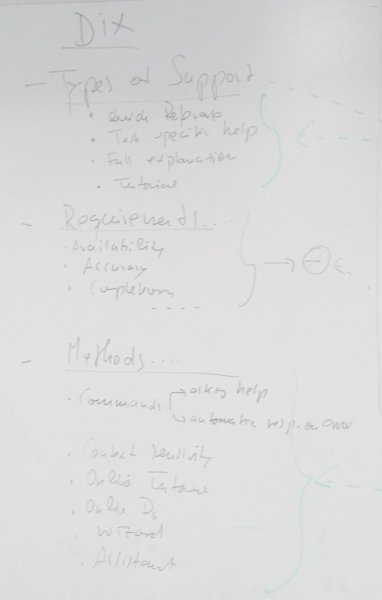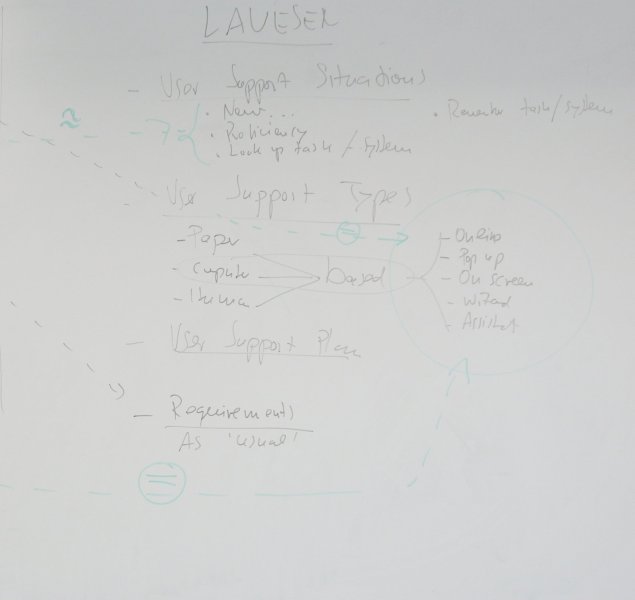
HIS-HMI WS05
|
Design View
User Support
Every model has to assume, that either the user is unable to use the
interface in the intended way or the system will produce some
unintended malfunctions. For this case the designer has to provide some
support for the potential users. Before we develop a theoretical
framework for this task we will have a short look to two very known
books (Dix, A., & Finlay, J.E., & Abowd,G.D., & Beale,
R. , 2003) and (Lauesen,S., 2005 ).
Comparison of Dix et al. and Lauesen
 |
 |
| Figure:
Whiteboard-figures related to the topic user |
support comparing Dix et al. and Lauesen |
The comparison between the two books of Dix et al. as well as
Lauesen shows, that the terminology is very different and some
structural similarity can only be gained by comparing the described
facts. Furthermore both books don't cite each other.... It is hard to
see, where there is some common theoretical framework guiding the
authors in their descriptions.
The following table gives a first overview about the main topics of
both books and their possible similarities.
| DIX et al. |
LAUESEN |
|
| (i) |
User Support
Situations (382f)
|
|
| (ii) |
Requirements (397ff)
|
|
| (iii) |
Types of Support (397-411)
|
Types of Support (385-391)
|
| (iv) |
Improve the User's Mental Models (384) | |
| (v) |
How to design
(412-414)
|
User Support Plan (392-412) (Complete description of a support case) |
(i) Lauesen starts with some typical situations in which a
user needs support. This generates the outline of a problem case.
(ii) Dix et al. starts directly with some general reqirements
for user support.
(iii) Then both books enumerate some typical ways how support can
be provided. While Dix el do restrict themselves to computer based
support, does Lauesen also take into account other kinds of
support which are rooted in the social context.
(iv) Lauesen makes clear that all these different kinds of support have
to serve only one goal: to improve the mental model of the user
such that he will become more apt to solve his task with the
system.
(v) While Dix et al. give only some general hints about how to
design presents Lauesen a full case-study including all the
topics which he has discused before.